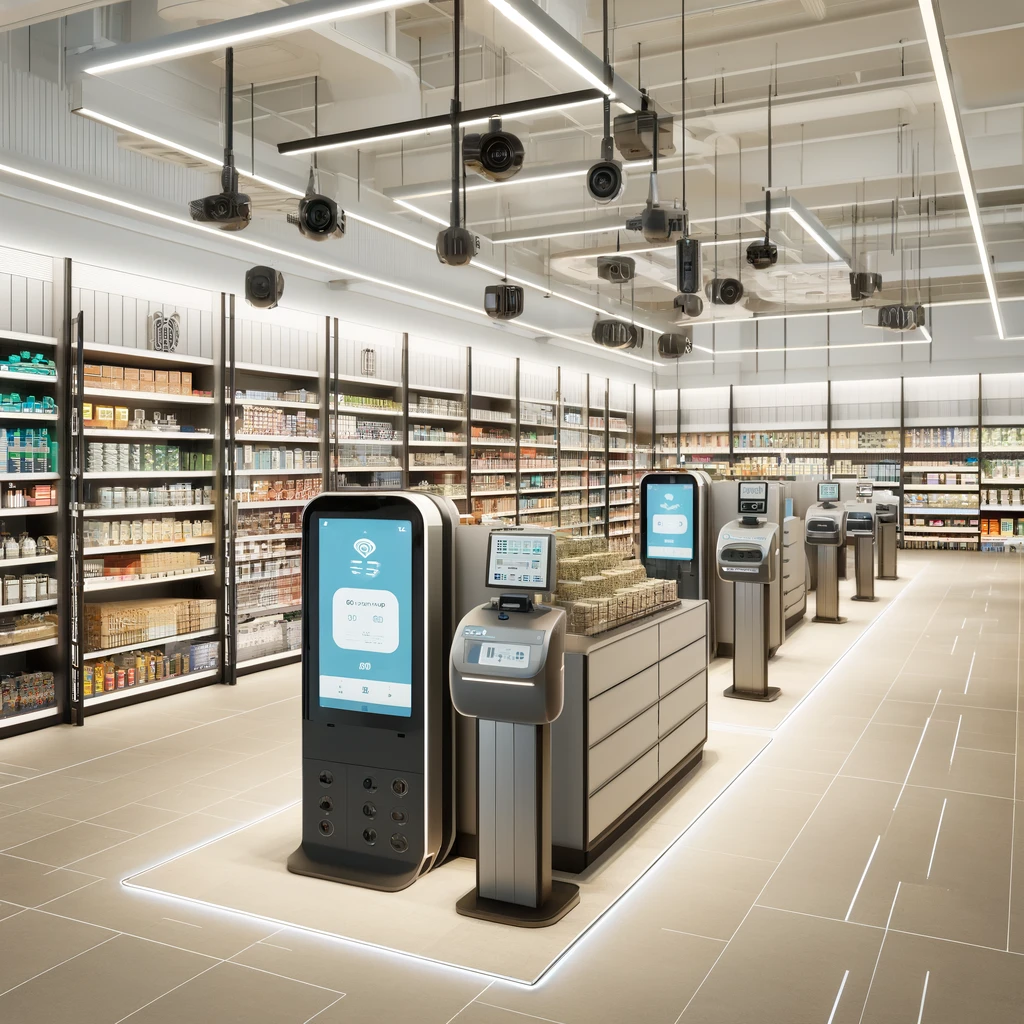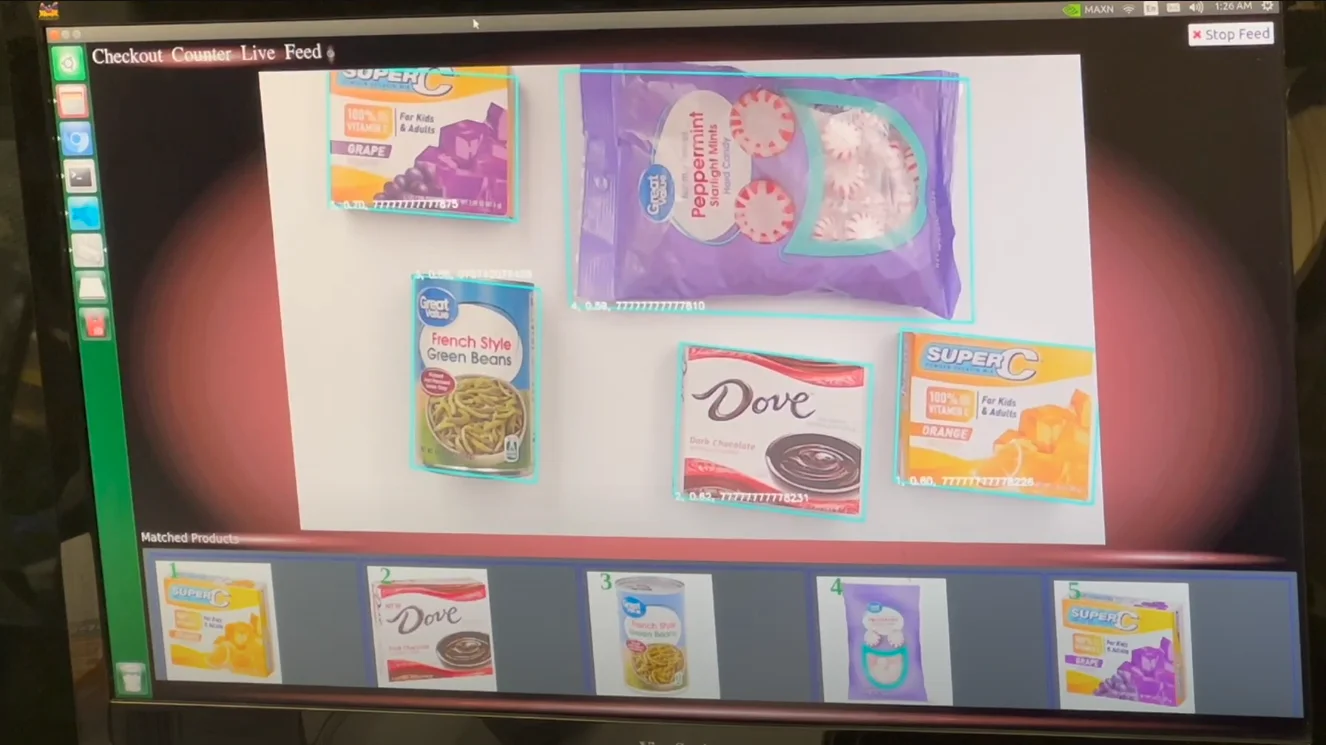As the retail landscape evolves, product managers are at the forefront of identifying and implementing innovative technologies that combat prevalent industry challenges around shrink, the customer experience, and the competitive threats posed by online retailers.
As innovators explore different technologies and techniques to address these issues, AI computer vision is often considered for its potential to be non-intrusive—even beneficial—to the customer experience, while offering more reliable, faster, and more accurate service than humans performing the same tasks.
In the case of self-checkout, for example, the seamless integration of AI computer vision into retail solutions can bridge the gap between digital and physical experiences, offering consumers the convenience and speed they desire while mitigating losses due to theft or scanning errors.
However, the journey to implement effective and scalable AI computer vision solutions has proven challenging. Product managers, whether developing in-house systems, collaborating with solution providers, or engaging with systems integrators, often encounter obstacles that hinder the adoption and effectiveness of these technologies.
The issues faced when incorporating computer vision into retail solutions can broadly be placed in one of two categories: technical or operational challenges. In today’s blog post, we’ll summarize the key technical issues that must be considered.
Why computer vision is failing
For retailers seeking to implement computer vision, the most frustrating challenges stem from taking conceptual value propositions and implementing them in the real world. Many of today’s computer vision efforts introduce exciting possibilities, but fail to execute beyond a laboratory environment. As retailers consider the use of computer vision “in the wild”, they have to consider the challenges of variable store conditions, customer and employee behavior, and widespread geographic deployment.
Here are some of the common issues they face.
1. Occlusion and Positioning
In any retail store environment, common behaviors and store conditions result in items being partially obscured (e.g., by other products or by consumers’ hands), or positioned inconsistently. The same product can present differently based on packaging changes, angles, or how it’s placed on shelves, challenging the ability of many computer vision systems to consistently and accurately detect and identify products.
When a solution’s accuracy takes a hit simply due to obstructions or steep angle presentation, such limitations make it nearly impossible to deploy the solution except in tightly controlled applications and environments.
2. Variable Lighting Conditions
Similarly, many computer vision systems struggle in non-ideal lighting conditions. Low and poorly placed lighting are common in many retail environments; and even brightly lit stores can have inconsistencies in lighting and shadows.
If a computer vision platform relies on bright, ideal lighting for accurate product identification, product managers and retail solution providers find themselves limited in the applications they can consider.
3. Fine-Grained Recognition
Retailers seeking to take advantage of computer vision face an additional challenge due to similarities in packaging. Retail goods can bear a close resemblance to one another, certainly within a particular category, and particularly when made by the same manufacturer. So while it should be relatively easy to distinguish between product categories (such as differentiating between a can of soda and a bottle of juice), the task of accurately identifying and categorizing specific variants and nuanced distinctions within those categories (for example, recognizing different types of soup or types of juice) can only be determined through a detailed examination. Given that retailers frequently carry multiple lines from the same manufacturer, such fine-grained recognition is critical for a computer vision platform to be successful.
4. Product Enrollment
As product managers consider the right solutions for their needs, they need to consider the time and resources required to enroll their relevant product catalog into the system for identification. Understanding how many pictures are needed to enroll a new product, whether enrollment can happen at a global level, or whether enrollment or tuning is required at the individual store level are all critical to estimating the effort involved in product catalog changes.
5. Product Catalog Size
While some retailers, such as convenience stores, might have a product catalog that numbers in the thousands, others, such as mass market stores, might manage more than a quarter of a million SKUs. Many computer vision platforms struggle to identify products with both high accuracy and speed once the catalog passes a certain threshold.
6. Number of Stores
Product catalog isn’t the only dimension of scalability to consider. The algorithm for many computer vision platforms must be tuned to the specific conditions of each individual store.
For retailers considering widespread deployment across many storefronts, they need to understand what kind of additional overhead widespread deployment will require. If the AI algorithm requires store-by-store tuning, then retailers will need to factor in the time and resources they need to change code or retrain the algorithm and multiply those costs by the number of stores planned for deployment.
7. Solution Costs
Of course, computer vision is not in itself a “solution.” As retailers and retail solution providers conceptualize how computer vision can be incorporated into new checkout systems, inventory management, or theft monitoring solutions, they also need to consider the total cost of the solution—the full bill of materials (BOM). For example, some computer vision solutions require expensive and/or multi-camera setups, or expensive compute hardware. Such requirements can make it challenging to justify the cost of widespread deployment.
8. Systems Integration
In addition to the development of the solution itself, the next question for retail solution providers is how it will be integrated into the retailer’s existing technology ecosystem.
Consider, for example, whether the technology will work with or within retail systems such as inventory management or point-of-sale systems, and if significant modifications or updates to current workflows and software infrastructure need to be considered. Equally important are the minimum requirements needed at retail locations and whether those requirements are realistic for widespread deployment. A great example of this is whether the platform can run locally or if it requires cloud-based infrastructure to operate.
9. Support for Additional Business Use Cases
While retailers are understandably focused on their first identified use case for computer vision (frequently related to checkout), the opportunities for computer vision extend across a number of other use cases.
As product managers consider the best platform for the first solution, it can also be beneficial to explore the viability of expanding the use of that platform to additional applications and use cases. For example, if work that’s been done to adapt the platform to your specific product catalog or to work with your existing tech ecosystem can be reused, retailers can dramatically decrease the time-to-market for the second, third, and fourth applications of computer vision.
Computer vision comes of age
Before computer vision can deliver meaningful value, computer vision platforms need to be able to consistently address the technical challenges identified here. Luckily, as AI continues to mature, new innovators like UltronAI are coming on to the scene to apply decades of research to address these issues.
In our next blog post, we’ll highlight the operational considerations that need to be addressed to harness the full potential of AI computer vision in retail.
—
Learn more
If you’re interested in exploring how AI computer vision can transform your retail solutions, we invite you to reach out for a demo. Based on decades of research, UltronAI’s computer vision technology has been designed to overcome traditional challenges and meet the needs of today’s modern retail solutions. Contact us today.




